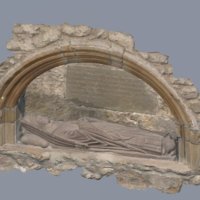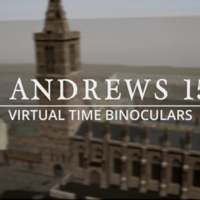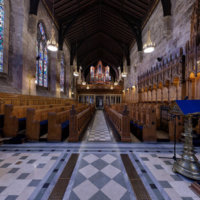Browse Items (4104 total)
Sort by:
Stuart House Multi Storey Flats
Stuart House is the Tallest Multi Storey Block of Flats in Cumbernauld. The top floor flat provides excellent views from the town and surrounding countryside.
Struthers Memorial Church
The foundation stone for the new Falkirk Town Mission was laid on 10th September 1898. Amazingly, almost all of the money for it, about £1600, was raised at a grand bazaar in the Town Hall that year.The original plans by Alexander Gauld were modified…
Stromness Fire Station
This station is normally staffed by up to 18 personnel working on a retained duty system. It is provided with 2 fire appliances which are equipped to deal with all types of emergency including structural fires and road traffic collisions. All of the…
Stroma Mausoleum & Doocot
Details to be finalised by Dunbeath preservation trust, boat etc. subject to numbers and there would be a charge for the boat trip. OS grid Ref ND3577, Guided Tour. Pleas contact Dunbeath Preservation Trust 01593-731233
Strattpeffer Pavilion
Originally built in 1881 to delight visiting Victorians, used as an American naval hospital in the Great War, famous in ‘60s and ‘70s as "the night-spot of the north", dilapidated until 2004, Strathpeffer Pavilion is now…
Strathspey Steam Railway (Aviemore)
Here resides two former Highland Railway Company sheds, with engines and carriages dating back to the late 1800s.
Strathpeffer Upper Pump Room
The Upper Pump Room, Strathpeffer, built in 1839, is the only one remaining of the two pump rooms that provided Spa water treatments to the hundreds of people who travelled from far and wide to receive various therapies to relieve their ailments.…
Strathmore Vintage Vehicle Club
Strathmore Vintage Vehicle Club was founded in 1968 and is home to a unique collection of historic vehicles and associated items. The purpose built premises at Bridge View House allows SVVC to have office space, a workshop and showroom. This is a…
Strathleven House (1)
Strathleven House is a category A listed Palladian mansion located on the outskirts of Dumbarton.Surrounded by scenic woodland, it is part of the Vale of Leven Industrial Estate. The building dates from 1700 and it is considered to be the first…
Strathleven House
Strathleven House within the Strathleven Industrial Estate.How to get there : Stirling Road from Dumbarton or Balloch turning at the roundabout near Chivas Brothers.Strathleven House is modern serviced office and business centre in a stunning…
Strathleven House
Strathleven House is a category A-listed Palladian mansion located on the outskirts of Dumbarton. Surrounded by scenic woodland, it is part of the Vale of Leven Industrial Estate. The building dates from 1700 and it is considered to be the first…
Strathisla Distillery
Listed Category B. Established in 1786 as Milton Distillery: 1695 armorial and other fragments from Milton tower re-set exterior of office block. Paired kilns; undershot waterwheel re-used for decorative effect.
Strathearn Artspace, Crieff
St. Michael’s Lodge (Mason’s Hall) has a classically detailed exterior. Internally refurbished as dance/concert hall in 1930s, it now serves as a community-owned arts venue.Enjoy a taster of what Strathearn Artspace offers on a regular basis:…
Strathbogie Parish Church
Large harled rectangle with square granite front set with paired Doric pilasters and a pediment. New front and offset Italianate tower, 1862, James Matthews; original glazing; later hall projects to street with plain pediment and round-headed windows…
Strathaven Town Mill
Built in 1650 by William, the Second Duke of Hamilton, then resident in Strathaven Castle, the Town Mill was to play an integral part in the working life of Strathaven for three and a quarter centuries.After 1714 Strathaven Castle ceased to be…
Strathaven Airfield
Strathaven is the third oldest operational airfield on the west of Scotland mainland - the other two being Prestwick and Glasgow Airports.
An additional attraction this year is the construction of the Richard Murphy designed house. It was founded by…
Strathaven Airfield
Strathaven is the third oldest operational airfield on the west of Scotland mainland - the other two being Prestwick and Glasgow Airports.
An additional attraction this year is the construction of the Richard Murphy designed house.It was founded by…
Strathallan School, Forgandenny
Strathallan School sits in 153 acres of what was formerly the Ruthven family estate. At its heart is Freeland House, built in 1825 and designed by leading architect William Burn. Today the school combines its historical heart with a superb range of…
Stranraer Museum
Stranraer's historic Old Town Hall, built in 1776, is the home of Stranraer Museum. Step inside and discover Wigtownshire's fascinating past.Inside Stranraer Museum see one of Scotland's oldest ploughs, a recognised collection of archaeology plus…
Stranraer Academy
Space, light, air, metal 'trees' and real birds, that's 'Street', the 200 metre-long spine of the new wing of Stranraer Academy. Work began in 1995. It was officially opened in January 1999. Facilities are considered to be second to none in Scotland.…
Straiton Parish Church
Category A listed architectural gem dating from 1758 with fine woodwork, and much interior and exterior ornamentation. Attached late 15th century chapel, bell tower of 1901, plus Covenanters' memorial in the Kirkyard.
Stracathro Walled Garden
To visit this listed walled garden designed by Archibald Simpson, which dates from 1827, please collect the key from Stracathro Services.For more information contact Pat Melville Evans on 01674 840048.
Stones, Stocks and Stories, Crieff Town Hall
Housed in the former Town Hall, itself situated on the site of the medieval Tolbooth, is the Pictish cross-slab known as the Crieff Burgh Cross, the 17th century Drummond Cross and Crieff's iron jougs (along with a dramatic reconstruction of how they…
Stonehaven, Clock Tower
The costs of the original 1790 build were met by the town’s Common Good Fund and the sole purpose of the building was to contain the Town Clock. In 1894 the tower was heightened, and the clock raised to its present position at the top of the square…
Stonehaven Police Station
Modern extension to Stonehaven Sheriff Courthouse in matching sandstone
Stonehaven Dunnottar Church of Scotland
Begun in 1394. Present oblong building 1782, extended 1862, remodelled 1903, by G P K Young, turning the old nave into transepts and adding a fine wooden trussed roof.The wood panelling in the chancel area is a First World War memorial. The stained…
Stonehaven Community Fire Station
Learn about the role of a firefighter, see the fire engines and equipment and meet and talk to the crew. You will also be able to arrange a free Home Fire Safety Visit and they will demonstrate just what it takes to become a modern-day…
Stone Carving Taster
This opportunity is part of East Dunbartonshire Leisure & Culture Trust's Trails and Tales programme which is supported by the Heritage Lottery Fund, Creative Scotland and East Dunbartonshire Council. The 3 year programme will lead to the…
Stockbridge Primary School
Designed by Robert Rowand Anderson, 1874-7, this is considered to be the best of the first generation Board Schools. Giant arches and gables build up to a slated fleche. A high-relief roundel of Education and her pupils adorns the chimney stack. The…
Stockbridge Parish Church
The Church was designed by the architect James Milne and opened in 1823 as an extension church of St Cuthbert's for the rapidly expanding population of the Stockbridge area. A semi-circular apse was added in 1888. In more recent times the building…
Stirling Youth Hostel
Come and see this Category B Listed Building and one of the most popular youth hostels in Scotland. The original building, Erskine Marykirk Church, dated from 1824 but was almost completely destroyed in a fire and only the front façade now remains of…
Stirling Tolbooth
Located at the centre of Stirling’s Old Town, the Category A Listed Tolbooth was built at the start of the 1700s and is an exceptionally good example of a burgh tolbooth. It has had many uses including; a municipal centre, courthouse and jail,…
Stirling Sheriff Court
An opportunity to visit the cells! Popular with all the family, the Category B Listed Sheriff Court is not to be missed. Originally designed by Thomas Brown in 1864 then modified by Wardrop and Reid in 1874-76. Court Room One contains an impressive…
Stirling Old High School Observatory & Telescope
Take your opportunity to see the moon, and more, through the 130 year-old Newtonian reflecting telescope within the copper-domed Observatory at the Category A Listed Stirling Highland Hotel. This impressive building used to be Stirling High School…
Stirling Council Archives
If you’re interested in your family history, history of your house, any another building or the past in general within the Stirling Council area then come along to Cowane’s Hospital and speak to the staff from our Local Archives Team. Our…
Stirling Community Fire Station
This year Stirling Community Fire Station is having an open day which will include: the Scotish Fire and Rescue Service; Police Scotland, Scottish Ambulance Service, Scottish Mountain Rescue. Also in attendance: will be theMobile Fire Museum,Antony…
Stirling Civic Trust
Civic Trusts have been established in Scotland for over 50 years, Stirling Civic Trust started in 1977. Trusts were set up to monitor planning applications to ensure that wherever possible, buildings of heritage interest and significance were…
Stirling City Heritage Trust Walking Tour - King Street 'A Place of Quality'
This walking tour celebrates the architectural heritage of King Street.Originally the royal burgh’s ‘High Gait’ the street was transformed inthe nineteenth century to be the jewel in Stirling’s commercial crownwith banks, large commercial retailers…
Stirling City Heritage Trust Walking Tour - John Allan 'A Man of Original Ideas'
This walking tour celebrates the work of local Victorian architect,John Allan.The walk will take us from the Stirling Smith through King’s Park tovisit a number of John Allan’s most important buildings and discussthe work and life of this most…
Stills Centre For Photography
Founded in 1977, Stills is a centre for photography based in the heart of Edinburgh, designed by architects Reiach and Hall. We will be offering tours at 11am & 3pm on Saturday and Sunday. Come and see our exhibition by Cindy Sherman, one of the…
Stewartry Museum to promote Kirkcudbright Galleries
The Stewarty Museum will be open in order to promote the new Kirkcudbright Galleries due to open in the former Town Hall building in March 2018. Building work started at the end of 2016 to transform the 19th century Town Hall in Kirkcudbright into a…
Stewarton: St Columba's Parish Church
Built 1696, renovated 1775 and widened 1825 with later additions. There is an unusual bell tower above the recently restored clock and a rare triangular window. Lainshaw Loft is used by local Foodbank and to store furniture from former Cairns Church…
Stewarton: John Knox Church
Opened 1841, this active evangelical church has a long history. In the small hall, view the Cradle Roll going back several decades. Sunday Service 11.15 a.m.
Stewarton Museum
This small but very interesting museum on the first floor of the Townhouse is the result of many years hard work dedicated to the life of Stewarton - the Bonnet Toun, and its people with access to local family history.
Stewart's Melville College
The College, by David Rhind, opened in 1855 as Daniel Stewart?s Hospital for 50 destitute boys. In 1870 the Edinburgh Merchant Company turned the Hospital into a fee-paying day school and changed the name to Daniel Stewart?s College. The old…
Stewart's Hall
Solid Victorian shop frontages and plain first floor transfixed by improbable four-storey tower with corbelled angle turrets and truncated pyramid roof, all built in Syllavethy granite with freestone dressings from Rhynie; hall for 650 within.…
Stevenston: Ardeer Parish Church
Designed by the distinguished Edinburgh architect Hippolyte Blanc, 1894 - 95, Gothic-style and red sandstone with crenellated octagonal tower, on corner site. Stained glass by Guthrie and Wells, and Abbey Studio. Halls at rear in grey sandstone,…
Stevenson Hall
A wonderful opportunity to visit a home where energy saving measures have been retro fitted, and discuss the pros and cons with the occupiers.?This property requires no appointment, visitors are welcomed between 10am and 4pm on both Saturday 7 and…
Stepps Parish Church
Built to a neo-Gothic design by P MacGregor Chalmers, the building reflects the scale and simplicity of a village church. The foundation stone was laid on 23 September 1899 and the building opened for worship on Sunday 27 May 1900. To mark the…
Stepps Community Fire Station
Located to the north-east of Glasgow, Stepps Community Fire Station provides fire cover to the villages of Muirhead, Chryston, Cardowan, Mount Ellen and Gartcosh. The building is purpose built and is easily recognisable, look for the training tower.…
Steeple
Completed in 1814 according to designs by David Hamilton of Glasgow, the Steeple is the iconic landmark of the town. 140ft tall, it has four stages – the bottom being severe Florentine; the second Greek Doric; the third or clock chamber Italianate;…
Statue House
William Gemmell (1814-1891) lived in Eaglesham and was a joiner by trade and self-taught sculptor. In the 1840s he became proficient in his hobby, and created many sculptures which received critical acclaim. Gemmell spent 3 years creating a lifesize…
Station House
U-plan range of dwellings (now flatted) entered through an arched pend. Former warehouse with stables and, the building served as station for the short lived Findhorn Railway linking the village with Kinloss between 1860 and 1869.
Start Point Lighthouse
Gothic-style 92-ft. lighthouse, built in 1836, with a loud foghorn & open in summer to public.
Start Point Lighthouse
Gothic-style 92-ft. lighthouse, built in 1836, with a loud foghorn & open in summer to public.
Start Point Lighthouse
Gothic-style 92-ft. lighthouse, built in 1836, with a loud foghorn & open in summer to public.
Stanely House - Youth with a Mission
Stanely House was built by industrialist Thomas Coats and the entirety of the wooden interiors (including the central staircase) was made using oak imported from America.
Stair Parish Church
Restrained Gothic built 1864 by architect William Alexander, in a lovely rural setting where a warm welcome awaits visitors. Early 20th century rose window with original design drawings. Almost full birth and marriage records and full cemetery index…
Stair Community Centre
Formerly Stair School, c.1800-1969, the centre is now owned and run by Stair Community Association. You are invited to see how the building has changed over 200 years, and proposed future improvements. Heritage exhibitions relating to the old school,…
Stagecoach Depot
Stagecoach has invested over £1 million refurbishing the Cumbernauld depot, modernising offices and staff facilities and improving the engineering workshop with new pit facilities.160 drivers, 30 engineering staff and 18 managerial and administration…
Stagecoach Bus Depot
Stagecoach has invested over £1 million refurbishing the Cumbernauld depot, modernising offices and staff facilities and improving the engineering workshop with new pit facilities.160 drivers, 30 engineering staff and 18 managerial and administration…
Stac Pollaidh
View from summit of Stac Pollaidh
St. Vincent Street Church
Take this opportunity to see inside one of our city's most stunning pieces of architecture, which is also listed on the World Monument Fund's list of the world's 100 most endangered buildings. You'll be amazed at the beautiful interior.For more…
St. Thomas of Canterbury RC Church
Dedicated to the patron saint of Arbroath, St Thomas of Canterbury RC Church was opened in February 1848. With its distinctive twin turrets it was described as “an ornament to the town” and remains so today. It is home to the only neo-classical…
St. Ninian's Episcopal Church
St Ninian's, by David Thomson was the first Episcopal church to be built on the south side of Glasgow. The most distinguishing features are the magnificent stained glass windows and the Sanctuary Murals by William Hole.The stained glass windows were…
St. Mary's Episcopal Cathedral
The Cathedral of St Mary the Virgin stands on the busy thoroughfare of Great Western Road. Rising above the tenements and plethora of shops and cafes, the 200ft spire of this Gothic Revival building overlooks Glasgow.For more information please go…
St. Margaret's Scottish Episcopal Church
A superb example of neo-Romanesque architecture, harmoniously proportioned with thick walls, small windows, round arches and a barrel-vaulted roof. There are noted stained glass windows, mosaics and an oral history exhibition, making it a welcoming…
St. Margaret's Episcopal Church
Opened on 6th August 1911 the small Episcopal Church of St. Margaret's, Lossiemouth is a peaceful place to visit.Inside the church you will find a reserved but well finished interior, with exposed wooded roof structure and finely tooled sandstone…
St. Margaret's Episcopal Church
A wonderful example of neo-Romanesque architecture - harmoniously proportioned with thick walls, small windows and round arches. The whole is enhanced with a barrel - vaulted roof, mosaics in the apses and noted stained glass windows.Fri, Sat &…
St. Machar's Cathedral
Artec Eva scan of Walter Ydil, Canon of St Machar’s Cathedral. The inscription translated from Latin reads ‘Here lies the Honorable man Master Walter Idil, Canon of the Churches of Aberdeen and Brechin, Licentate in Decrees, who gave twenty shillings…
St. Machar's Cathedral
Artec Eva scan of Walter Ydil, Canon of St Machar’s Cathedral. The inscription translated from Latin reads ‘Here lies the Honorable man Master Walter Idil, Canon of the Churches of Aberdeen and Brechin, Licentate in Decrees, who gave twenty shillings…
St. James' Pollok Parish Church
Come and visit our Mini-Cathedral set in a Glasgow Urban Priority Area. St. James' (Pollok) Church has a wonderful history for you to explore. Look out from the Church towards the famous Crookston Castle.�Our Sanctuary Stained Glass windows are…
St. James Church of Scotland
St. James Church on Prospect Terrace is a fine building which looks out onto the old harbour, Seatown and out across Lossiemouh Bay to Buckie. Entrance is through the decorated large pointed doorway, above which is sited the beautifully crafted…
St. Gerardines High Church
Lossiemouth's High Church, situated on Coulardhill, was built in 1903 by Sir John Burnet in the Romanesque Style.With its distinctive red tiled roof, white walls and imposing interior this B listed building is a major landmark on the Lossiemouth…
St. Francis Centre, The
The magnificent gothic grandeur of the St Francis Centre is breathtaking. The category A listed building with beautiful alters and its very own private chapel is well worth a visit.
St. Cyrus, National Nature Reserve
St Cyrus reserve is one of the most picturesque sections of coastline in north-east Scotland. It boasts the magnificent sandy sweep of Montrose Bay, towering volcanic cliffs, yellow dunes, and a spectacular wildflower meadow that supports a number…
St. Columba Gaelic Church of Scotland
Early Gothic church which can accommodate more than 1000! A beautiful building, the nave is 112 feet long and 40 feet wide, the spire is 220 feet high, with pinnacles, a belfry stage, a niche and a canopy containing a statue of St. Columba. All…
St. Andrew's Metropolitan Cathedral
Glasgow's first post-Reformation Catholic Church has stunning d�cor and contemporary artwork, including Peter Howson's 'St John Ogilvie' and a baptismal font by Tim Pomeroy. Outside, the Italian Cloister Garden is a peaceful space with a memorial to…
St. Andrew's in the Square (Festival Pop-Up Hub!)
A stunning 18th century former church, inspired by St Martin-in-the-Fields in London, this unique building will be the Glasgow Doors Open Days Festival pop-up hub for the week. Explore the beautiful interior and enjoy a full programme of talks and…
St Vincent's Chapel
A village church in the heart of the city, St Vincent's is a Victorian Gothic delight which opened in 1857. Light streams through the stained-glass windows including an admirably bright and clear heraldic display by A. Carrick Whalen. Formerly home…
St Vigeans Sculptured Stones
Displayed and interpreted inside a converted cottage, this is one of the most important collections of Pictish Christian stones. It includes the Drosten Stone, which carries a remarkable inscription and includes a hooded hunter and a squatting imp.
St Vigeans Church
St Vigeans Church dates from the 12th century and is the original parish church of Arbroath. It sits on a kaim which makes it of interest to geologists. The church also has a number of Consecration Crosses which mark the date 1242 when the church was…
St Thomas RC Church
Listed Category A 1828-9, built to a design by William Robertson, Elgin, with money raised by the priest, Walter Lovi who also acted as master-of-works. Large copper dome designed by C J Menart, Glasgow, added 1916. The painting hanging behind the…
St Ternan's Scottish Episcopal Church, Muchalls
St Ternan's church is the oldest in the Diocese of Brechin. The centre section was built in 1828/31 replacing an old chapel located in the grounds of Muchalls castle. Later additions were made, including a gallery, (since removed) and the lengthening…
St Stephen's Stockbridge
Saint Stephen's was designed by William Playfair and opened for worship in December 1828. Reconstruction was carried out in 1956-1957 by installing a floor across at the gallery level to create halls below and a church above. St Stephens was sold by…
St Stephen's Church
Carefully detailed Arts and Crafts Gothic by W.L. Carruthers, 1895-97, the church has a high open interior under a braced collar roof.The stained glass is of note. The three-light west window depicts the Martyrdom of St Stephen and is by A.…
St Salvator's Chapel
This chapel was founded in 1450 and built in a neo-Gothic style.
It was originally founded with a missionary and educational function as it was part of Bishop Kennedy's College of the Holy Saviour.
St Salvator's has been the site of much conflict…
It was originally founded with a missionary and educational function as it was part of Bishop Kennedy's College of the Holy Saviour.
St Salvator's has been the site of much conflict…
St Salvador's Church
St Salvador’s, commissioned at an early stage in Bodley’s long career, shows the beginning of interest in a simple English gothic style, an ideal basis for coloured decoration. Its design is a progress from west to east, starting with the low…
St Rufus Church of Scotland
Listed Category A. Large Gothic buttressed church with square tower on dominant site; designed by the Edinburgh architect, James Gillespie Graham to replace the old St Rufus, from which a small medieval cupboard for storage of communion vessels is…
St Quivox Parish Church
Category A-listed. The medieval building was restored in 1595 and extended to form a T-plan in 1767. Good pulpit and 18th century?fittings, and the kirkyard contains the mausoleum of the Campbells of Craigie by W H Playfair, 1822.
St Peter's Seminary
?Arguably Scotland's most significant modernist building, St Peter's was designed by Andy MacMillan and Isi Metzstein of Gillespie, Kidd and Coia and was built in 1966 as a college to train young priests. It went on to win the RIBA Gold Medal for…
St Peter's RC Church
From its towering campanile to its intimate cloistered courtyard, a little bit of rural Italy in the heart of literary Morningside. St Peter�s was built especially for Father John Gray (former aesthetic poet and associate of Mallarm�, Rimbaud,…
St Peter's Kirk
The current Category B listed?church dates from 1808 but the first St Peter's church was referred to as far back as 1178.
St Peter's Heritage Centre & Heritage Hall
There has been a chapel to St Peter on this site since 12C. The 18C church was rectangular in plan and was extended and altered in 1873 and 1895. In 2000 the building became the home of the St Peter's Heritage Trust and houses photographs,…
St Peter's Episcopal Church (1)
A notable example of an Episcopal Church originally built in 1854 and extended in 1881 with good interior details.�Alterations have taken place over the intervening 151 years including incorporating a hall into the south aisle, removing pews to make…
St Peter's Episcopal Church
The most complete Gothic church in Edinburgh - The Builder, 1865.Grade A listed gothic church with 1930’s hall attached. The church was redecorated and re-lit in the early 2000s with a rich red scheme. The newly rebuilt Link building by Benjamin…



